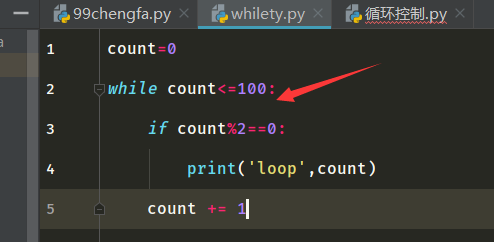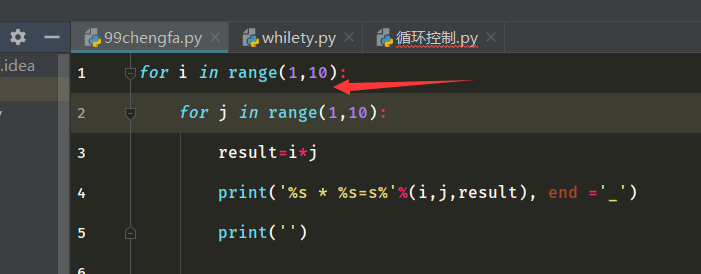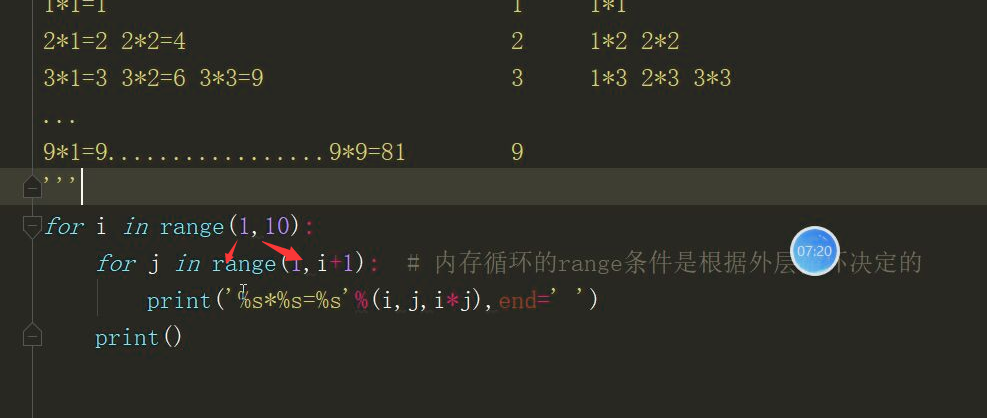if 语句是用来判断条件的真假,是否成立,如果为ture就执行,为flase则跳过
1.python用缩进表示代码的归属
2.同一缩进的代码,称之为代码块,默认缩进4个
if 语句结构
if 条件语句
代码块1
代码块2
代码块3
else: # 不能单独使用,必须和if,while,for配合使用
代码块1
代码块2
代码块3
elif:
代码块1 if elif else 同一级别配合使用的时候,只会指向一个代码块(走了if就不会走elif else,
走了elif就不会走else,if看到没走,走了else说明if elif都没走,都不满足if elif的条件
代码块2
代码块3
else:
代码块1
代码块2
代码块3
while语法:用来判断语句循环的次数
while 条件:
代码1
代码2
代码3
代码4
代码5

break:立即结束本层循环(只针对它所属于的哪一个while有效)
continue:跳出本次循环,直接开始下一次循环
while也可以嵌套
while+else
只有当while循环依据条件正常结束才会走else代码
如果是主动结束的break,那么不会走else
小练习:模拟用户登录 有三次机会 超过了 提示用户是否继续
user_name_bd='Kevin' password_bd=12345 c=0 while True: if c==3: choice=input('三次机会已经用完,你还想不想尝试?(Y/N)>>:') if choice=='Y': c=0 else: break user_name_bd=input('please input your name>>:') password_bd=input('please input your password_bd>>:') if user_name_bd=='kevin'and password_bd==12345: print('登陆成功') break else: c+=1
for循环:一般用于循环从容器(列表list 或 字典dict )中取出相对应的数值
for i in [21,23,43,45,56,89] for i in ['name':'jason','age':18,'habby':'weite'] 只取kye
len() # 获取数据类型(容器类型)的个数,字符串是特例 获取的是字符串中字符的个数
for循环语法结构
for 变量名 in 容器类型:
代码1,
代码2,
代码3,
代码4,


打印金字塔:
max_level = 5 for current_level in range(1,max_level+1): # 打印空格 for i in range(max_level-current_level): print(' ',end='') # 打印信号 for j in range(2*current_level-1): print('*',end='') print()
for循环也是可以嵌套和if while else 使用
range在python2与python3中的区别 (面试常考)
python2中:
1.range其实就是一个列表
2.xrange其实就是你python3中的range
python3中:
range就是一种迭代,不占具多余的内存空间,需要时才会取出相对应的值
